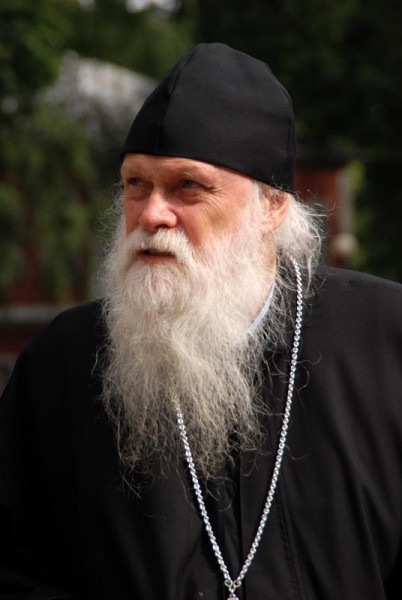 Fr. Gabriel Bunge
Fr. Gabriel Bunge
About fifteen years ago, I had a unique opportunity to visit the hermitage of a Catholic priest-monk and theologian in the mountains of Switzerland. He was well known for his writings on the holy fathers of the early Christian Church, and no less well known for his unusual—from the modern, Western point of view—monastic lifestyle. Somewhat familiar with how Catholic monasteries generally look today, I was not expecting to feel so at home as an Orthodox monastic in his Catholic hermitage.
After ascending a wooded mountain path to a small dwelling among the trees, we were greeted by an austere looking, elderly man, his gray beard flowing over black robes. His head was covered by a hood bearing a red cross embroidered over the forehead. It was as if we had been transported to the Egyptian desert, to behold St. Anthony the Great. As he and his co-struggler Fr. Raphael treated us to tea, we talked about the Church, East and West, and about the Russian Orthodox Church. But there was no talk of them joining that Church—it would have been uncomfortable to even mention it.
We felt that we had come into brief contact with a monk who was one with us in spirit, although he was not in our Church, and we parted with joy at this pleasant revelation while Fr. Gabriel made the sign of the cross over us in the Orthodox manner.
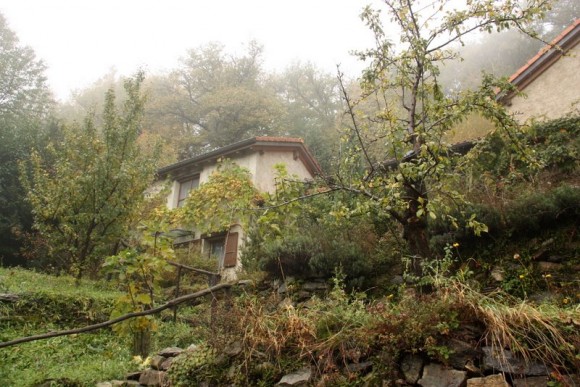 The Monastery of the Holy Cross, Roveredo, Swizterland.
The Monastery of the Holy Cross, Roveredo, Swizterland.
Fr. Gabriel never had and still does not have electronic communication with the outside world, and we heard very little from or about him after our visit. Nevertheless we did not forget him, and in the intervening time we never ceased to think how good it would be if he were in communion with us, the Orthodox. But never would we have tried to approach this subject with him—we somehow felt that God was guiding him as He sees fit.
Fr. Raphael, a Swiss, has since passed away, and Fr. Gabriel is the abbot and sole monk of what is now the Monastery of the Holy Cross, part of the Russian Orthodox Church. He was baptized Orthodox on the eve of the Dormition of the Theotokos in Moscow, August 2010. He is now Schema-Archimandrite Gabriel.
Recently in Moscow on a very demanding schedule, Fr. Gabriel still took the time to talk with us.
* * *
—Fr. Gabriel, although you have talked about your life in other interviews, tell us again a little about yourself.
—In live in Roveredo, a tiny village of about 100 inhabitants. My monastery is above the village in the woods, in the mountains of the Lugano region, the Italian part of Switzerland.
—You had been Catholic from childhood?
—Yes, but not a practicing Catholic all my life. My father was Lutheran, and my mother Catholic, and I was baptized Catholic. But as it often happens in these cases, neither of my parents practiced their religions. Neither my father nor mother went to church. And so neither did I. But as young people always go their own way, I rediscovered the faith of my Baptism. At first I went to the Catholic Church, by myself. My parents did not encourage me, they only tolerated this.
—Even your mother?
—She was a believing Catholic, but because of her marriage to a Lutheran, she lost her practice. Only much later, when I was already a monk, she went back to church and began to practice her Catholic faith. My father grudgingly went with her, at least on Easter or Christmas, because he did not want to spend the holidays alone.
—Where were you born?
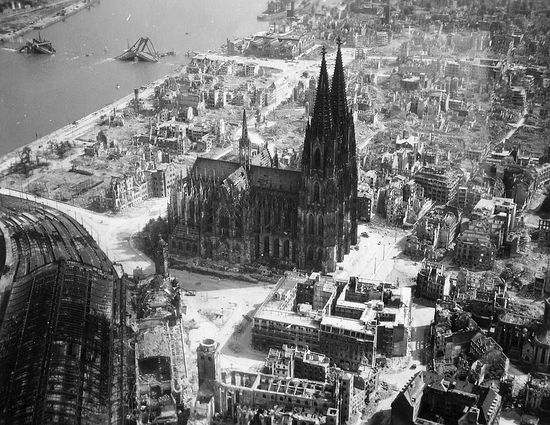 The Koln Cathedral during WWII.
The Koln Cathedral during WWII.
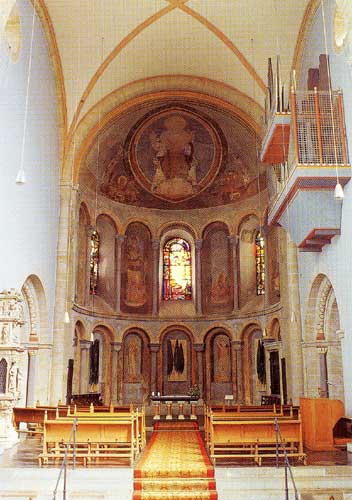 The Church of St. Gereon, apse.
The Church of St. Gereon, apse.
—Did these memories make you feel the desire to “fuse” Europe back together with Church of early Christianity?
—Of course, I did not know about the Orthodox Church for a long time. I only discovered the existence of Orthodoxy little-by-little. Some of my Orthodox friends of today have told me that Catholics know that we “exist”, and nothing more. Simple people even ask, “Do you venerate the Mother of God, too?” This is even fifty years after Vatican II, which seemed to “open the windows” of what was the very closed Catholic Church, and their knowledge of Orthodoxy is still very poor. I had to discover this little-by-little for myself. I did not know about any Orthodox communities; there were no Orthodox churches in the cities, because the Russians, at least, celebrated in Protestant churches given them to use for a couple of hours on Sunday, as is often the case even today. In Lugano, the Russian Orthodox have bought a small Protestant church that was empty and unused. All the other Orthodox communities, such as the Romanians, celebrate in Catholic churches given them to use. But now we have a little church, which must be paid for. It is gradually being transformed into an Orthodox church, with an iconostasis and everything.
So, I had to discover Orthodoxy little-by-little. When I was about nineteen years old, after gymnasium,[2] I went with a friend to Rome, and there I discovered the early Christian period: the catacombs, the old churches, those founded by Sts. Constantine and Helen, and so on. It was very impressive. I must confess that this strengthened my consciousness of myself as a Catholic. Rome is apostolic ground—here is the tomb of St. Peter, there of St. Paul, Santa Maria Maggiore, Santa Croce, San Giovanni Laterana … all these paleo-Christian churches, this incredible archeological continuity. But it was much later that I discovered that although there is continuity on the level of architecture, there was no continuity on the level of the Apostolic Church, the foundation.
I discovered only later that Santa Maria Maggiore and the other churches have always been the same, but this continuity does not exist on other levels, the more essential levels. It is the same with the Anglicans. They have the Cathedral of St. Augustine in Canterbury on one level, but on the theological level there is no continuity, there is a break. However, at the time I was too young to be aware that there are so many breaks and interruptions in the history of the Western Church. I had to discover this for myself, gradually.
People often ask me why I became Orthodox, and whether there was a crucial moment or event in this evolution. There was a crucial moment, and though I have said this before, I will repeat it. I had to discover it—first on the literary level, through books, music, etc. It is same for monasticism—I had to discover its spirit through the writings of the desert fathers. But I discovered real, living Orthodoxy at the age of twenty-one, when I was in Greece. I was a student, not yet a monk. I could not yet enter the monastery because my father wouldn’t allow it. I was too young. I thank heaven that he did not allow it, because that way I had an opportunity to travel to Greece with other students, and to discover living Orthodoxy there. I saw holy monasteries, and even met a holy monk. I went to the Liturgy. This was before Vatican II. The Greeks were extremely kind and friendly to me as a Catholic. Today that would probably be different, because the Catholics have changed completely towards the Orthodox.
—For the better, or for the worse?
—From the worst to the best. But now the Orthodox keep their distance because they feel invaded.
I visited the seminaries and monasteries in Greece, and at one time said to the monks and students, “Everything is fine here, and I like it, but… it is a pity that you are separated from us.” The immediate reply was, “You are wrong, it is you who separated from us.” And so I was confronted for the first time (I was only twenty-one years old) with this fundamental problem of separation which is seen in a different way in the East and West. Who is right? At twenty-one I didn’t have the means to check the answer. Only little-by-little did I obtain them, and so discovered that in fact it is the West that separated from the common foundation. There is the archeological continuity, in the famous churches from the time of Constantine and Helena for example, but at the essential level— theology, Liturgics, and everything else—there is not. My little book, Earthen Vessels,[3] speaks about one little aspect that is very essential: that there was an interruption.
—You mentioned before that you have read the book by the German historian Johannes Haller[4] about the history of the Church up to the 1500s, as well as other books about the papacy, such as the one by Abbe Guettée.[5]
—Yes, in fact I am reading the book by Haller now. It is purely a history book, while the book by Guettée is polemics. You see, Haller was impartial, very quiet, and he had free access to the Vatican library. It is an objective history book, has very quiet spirit, but is very powerful. The facts are overwhelming.
—You have said that you are glad you are reading about Church history now, and not earlier, because it could have caused you to lose your faith. Could you elaborate on that? You think you needed to be stronger in order to face the facts. Is that correct?
—I feel that faith in young people needs to be preserved, protected. When you have a solid foundation, sufficient criteria in your mind, and stronger faith, you will be able to judge.
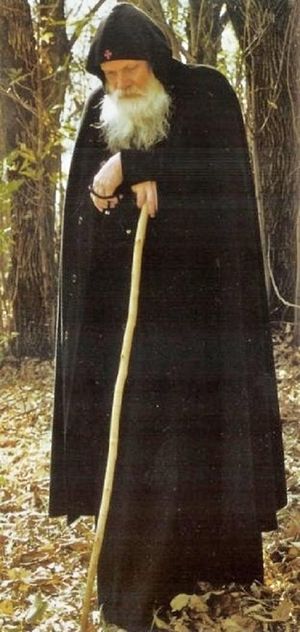
—Yes, then you can confront yourself with this mass of historical facts.
—Because you feel that these facts taken by themselves may be too devastating or scandalous for people?
—Yes, of course. You see, history is not theology. History is just the facts—what happened. Haller’s work describes all the ups and downs... it is fascinating, but it is true history. It makes you wonder...
—History, warts and all?
—Yes, with all the warts; and the Pope’s claim of priority, of being the head of the Church. It is very odd. In as early as the fourth century, Pope Damasus claimed that the Roman Church (not the Pope—yet) has primacy over all the other Churches, because of what Jesus Christ said to Peter: “You are a rock, and upon this rock I will build my Church” (cf. Mt. 16:8) So they, Rome, have very much identified this rock with an institution, with something visible—the Roman Church. Although very many fathers of the Church, both East and West, identify this rock, as St. Ambrose of Milan did in the year 382, with the faith of the people. It is the confession of Jesus Christ as the Son of the Living God. It was not Peter’s personal faith; he was not a better theologian or apostle than the other Apostles. It was revealed to him by the Father. This is the rock which cannot be destroyed. Peter shortly afterwards proves that he did not understand anything of this confession. He is called a “devil”. The Lord says, “Get thee behind me, satan” (cf. Mt. 16:23), and so on. Not only St. Ambrose, but the most important fathers of both the East and West also say the same thing. For the Roman Catholic, it is absolutely obvious that this rock is the person of Peter. And Peter according to tradition died in Rome, and therefore it must be the Roman Church, and his successor, the bishop of Rome, who is this rock. But Peter was in many places. Why does it only have to be the place where he died? Many people could claim to have his tomb... but he died in Rome, as did St. Paul. But is this sufficient reason for this city, which was the capital of the Roman Empire at the time, to become the head of all the Churches, too? If there is any city that could lay claim to that title it would be Jerusalem, the city where our Lord died, and not Peter. In Jerusalem is the tomb of our Lord, and there He resurrected. The head of the Church is in any case our Lord.
—This always seemed to me to be a devastating example of what is called in Russian плотское мудрование[6]—fleshly mindedness, a purely earthly way of thinking.
—Yes, and it immediately took hold. And what is so shocking in this history of the papacy by Haller is precisely this worldly aspect—how the spiritual means, such as excommunication and interdict, have been used continuously, for hundreds of years, just for political reasons. And what is even more shocking is that people didn’t even bother to obey these interdicts. Whole countries were under interdict; that means no Mass, no Sacraments, no bells—nothing.
—Why?
—Why? Because the king would not give in to the Pope’s territorial pretenses. The Pope was always fighting for his own state, which became larger and larger, then smaller and smaller, and still exists, as is the function in the Vatican City. It was always for these political, territorial reasons. But most of these countries, hundreds of kings, even bishops, simply didn’t bother. They continued to celebrate mass, dispense the Sacraments, and so on.
—So they were technically in “disobedience” to the Pope?
—Perfectly. To me, this was shocking. Even today it is shocking. It is shocking that these spiritual means are used for purely material, political reasons, and those who were hit by these interdicts did not bother. So, you can imagine that this would gradually destroy the Church from within. You understand much better why Western Christianity destroyed and continues to destroy itself from within. Not from outside. It is horrible, I must say. It is what I call “secularization”. There are Popes who themselves fought in battles. In was an ordinary thing for Cardinals to have armies, and so on. This is secularization. It means that the Church was closing its own horizon in on itself to include increasingly secular interests. The Popes were defending (understandably) their own independency—from the Emperor, who they in fact needed, because without the Emperor they would have no longer been independent of the dukes, the king of Sicily, etc., whatsoever. You begin to understand a lot of things.
—I assume you are reading this book in the original German. Are there translations?
—This is a classic, but I don’t know—there are dozens of books of this kind. I only quoted this book to tell you that even now, afterwards, I am still interested in these questions, in reading books that during my time of searching I was forbidden to read. I don’t think that it would have been very useful to me then anyway, because I would have completely lost my faith.
—Forbidden by whom?
—By my professors in the Catholic faculty in the university. In Germany theology is taught by the state, and so I received my theological education from a state university.
So, I continue to study just to deepen my understanding of the reasons for the separation between East and West. Of course, you can understand quite a lot from this, but there is still one big mystery that I am still unable to understand: Why did God allow this?
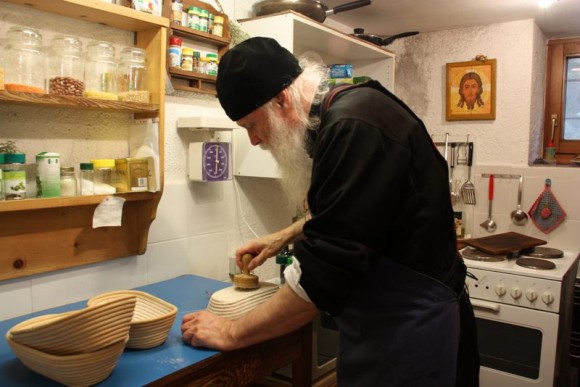 Fr. Gabriel Bunge in his monastery in Switzerland.
Fr. Gabriel Bunge in his monastery in Switzerland.
You can say that it was all the mistake of the Pope, but the faithful had no choice. That is what I say to my friends now. I say, “Look, you shouldn’t criticize or condemn Catholics. They are just born on the wrong side of the street. It is not their mistake. They have no choice. They never had any choice. The whole West belonged to the Roman Patriarchate, which gradually became larger and larger; they were not part of other patriarchates. In any case, they are not today. That is their mistake—they were just born there.
—This, however, brings to mind a question I always have. I myself am a Westerner, a convert to Orthodoxy, I have no Eastern Orthodox roots, and so my question is not intended to be anti-Western. However, why are we apparently so prone to earthly, secular thinking in the realm of religion—more than the Christian East? Theoretically, the same process could have happened anywhere.
—Theoretically, yes, but in practice, it did not. I think it is because secularization is a very long process, and its clearest expression is Protestantism, which is an inner-Catholic phenomenon. It is an inner-Catholic phenomenon in the Western Church which occurred after its separation from the Eastern part of the Church. It could not develop before. I will tell you about a most terrible experience. I am speaking about history, but perhaps it is better to speak about my own “little history” of seventy-three years. I entered the monastery at age twenty-two in exactly the year that the Second Vatican Council was opened. With my Greek Orthodox experience and so on, I became a monk at Chevetogne,[7] and we were really full of hope that now the Roman Church would turn back on its path, and there were many signs that this is how it would happen. Paul VI had a very strong and deep desire for reconciliation with the Orthodox Church. He was the incarnation of this Janus-face (double-face) of the Western Church. On one side, he wanted to concelebrate the Liturgy with Patriarch Athenagoros when they met in Jerusalem, and he brought a golden chalice to do so. But the ecumenists (thank God) separated these two old men, because after such an act it would have become worse than it was before. So, they did not serve together. He offered to give the Patriarch that chalice. But it is well proved that he wanted, through Liturgical reforms, to make the Latin mass become acceptable to Protestants, not thinking, not aware that it would in the same moment become completely unacceptable to the Orthodox. You can see that the Catholic Church is between these opposite positions—the Orthodox East and the Protestant West. But then the general evolution did not go towards the east, but towards the west. It became a slow self-Protestantization of the Roman Church—a self-secularization, with all the destruction, both physical and spiritual, that we have seen.
This was a real historical disaster of unseen dimensions. You see, Protestantism is an inner-Catholic virus. And the Roman Catholic Church has no antibody against that virus. The antibody is Orthodoxy, which has never been, for five hundred years, tempted by Protestantism. Even if there be an Ecumenical Patriarch who has sympathies with Calvinism (as there once was), this is local. It has no influence on the Orthodox consciousness. It is just limited, and that is all. The Orthodox Church had plenty of opportunities to be infected with Protestantism and secularism, but they did not succumb—only on the surface.
—A cold, rather than a cancer?
—Yes, a cold, not a cancer. This is really a tragedy of historical dimensions.
Many Catholics are aware of this now, because they no longer consider the Orthodox Church to be a competitor or adversary. That is why they help them in any way to establish their parishes in the West. They give them their churches so that they can serve the Liturgies on Catholic altars, which would have been unimaginable before.
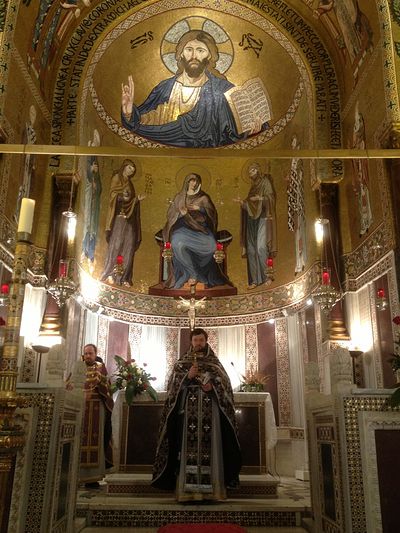 Orthodox Liturgy in the Capella Palatina, Palermo.
Orthodox Liturgy in the Capella Palatina, Palermo.
—Just as an aside, last spring there was a delegation from Russia present at a celebration in Sicily commemorating the aid given by Russian soldiers to victims of the great Messina earthquake in 1908. The Russian clergy present were invited to serve the Liturgy for the local Orthodox congregation in the Capella Palatina in Palermo.
—Ah, beautiful. The Russians continually celebrate solemn Liturgies in the St. Nicholas Cathedral in Bari. I have seen one Liturgy there celebrated by a Russian Metropolitan, about 20 priests, with a large choir. And I thought, “That is the Liturgy required by this beautiful cathedral. But when it was over, the Latin mass started… and you want to cry. You want to ask, “What are you doing here?”
In a way, this is something out of the ordinary, but it shows that many Catholics are not sure any more that they are right.
 St. Nicholas Cathedral, Bari, Italy.
St. Nicholas Cathedral, Bari, Italy.
—The only way I see it happening is if they turn to their own Orthodoxy, because unless God works an unprecedented miracle that turns everyone to Byzantine Orthodoxy, there is a whole culture at work to prevent it. It is not just a matter of texts, or formulas. But they must turn back to their own Orthodoxy, their own traditions. For all these years, when I wrote my little books, my aim was this: as a monk, to help people have a spiritual life, to rediscover, reintegrate their own spiritual heritage, which is of course the same as ours; because we have the same roots. But the success of my endeavor, at least among monks, is close to zero. Especially among monks. The books are read mostly by laypeople, not by priests and monks. The monks are the ones who practice yoga, Zen, reiki, and so on. When you tell this to Russian monks they are shocked, they can’t imagine this is happening. I do not judge them; thank God, it is our Lord Who will judge the world and not me. But it means that people are not looking for a solution, an answer within their own tradition. They are looking outside of it, in non-Christian religions. To me, Catholic monks practicing Zen meditation is like Zen monks praying the Stations of the Cross. It is completely absurd. In Buddhism, suffering has a different origin; it is overcome in a different way from in Christianity. There is no crucified Savior. Why should they meditate on the Stations of the Cross? Of course, they do not.
—And how could a Christian monk, who believes in a personal God, pray to the impersonal universe of Zen?
—In those monasteries they have Zen gardens... But could you imagine the Stations of the Cross in a Zen monastery? Buddhist monks kneeling before the Stations? It’s unimaginable.
—They have as if lost their self-identity.
—But what is so striking is they do not even try to dig in their own ground, to find their own roots—the source, which has been filled up by trash. They seem to be convinced that there is nothing there, and never has been.
So we have to look for this source as well. I remember quite well my monastic youth—there were those in the monastery who felt that there was nothing there, that everything was dry. Then came a Zen master, a Jesuit (very well-known; he died a long time ago), and it was a revelation. At least it was something spiritual... They had only seen formalism. Thanks to God, I had discovered the holy fathers and the primitive monastic literature before I came to the monastery. It was not the monastery that taught me. I continued my search in the monastery.
—In Chevetogne?
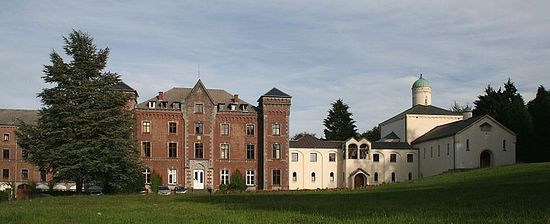 Chevetogne Abbey, Belgium.
Chevetogne Abbey, Belgium.
—Yes. I went there because it seemed closer to what I discovered in Greece. To tell the truth, I was sent there. I had entered a Benedictine Abbey in Germany. My novice master, the abbot, a holy man, loved me very much, and he could see that I was not in the right place. He sacrificed his promising novice and sent him to Chevetogne, to see if this was more fitting. When I made my monastic profession he came himself to visit me. He was a holy man. My confessor, a Trappist monk, was also a holy man. I had the chance to meet more than one holy man, even in the West. They still exist.
I feel that my own path is to prove, even to the Orthodox, that it is possible, even within the Western tradition, to rediscover the common ground, and to live out of this. You can do this—not by yourself, of course, but only with God’s grace. But then I reached a point where I could no longer support being in only spiritual communion with the Orthodox Church so close to my heart. I wanted real, sacramental communion. Therefore, I asked for it.
—Do you believe that on this path of digging down to the roots of one’s own Western tradition, some would inevitably feel compelled to take the step that you took?
—It is difficult to say, because it may not be technically possible for everyone to do so. In the West, the Orthodox Church had not been so well represented. Now it is changing. I have a lot of friends who are following the same path, they are “orthodox” but not in a confessional way. I do not know whether they ever will become Orthodox. My own experience teaches me that you will not always find help from the Orthodox side. Proselytism is not normally Orthodox, and you will at times not even find concrete help. I was even discouraged. There was a well-known theologian (I will not say who)… I was a young student, and he literally prohibited me and other monks from Chevetogne to become Orthodox. He said, no! You shall not become Orthodox! You must suffer in your flesh the tragedy of separation. I did, because I had no other way. I addressed another Russian Orthodox Metropolitan for help—he did not help me. He just turned me away. And this was God’s will. In the right moment, it truly went smoothly. Really. Like a letter in the Swiss Post. But before, it seemed impossible.
—I am sure that everything happens according to God’s will and plan, but do you feel that perhaps Orthodox people should provide more encouragement to those people who are searching, wavering? Who are digging deeply but not getting to the roots?
—They should know their own faith better, and be capable of answering questions. They should not criticize everything and everybody.
—As many converts are prone to do.
—Yes, the converts are the most severe judges. But, yes, they should be able to answer essential questions. However, I am speaking of my own experience, in Switzerland. I would suppose that it is different in America, where there are hundreds of different churches, Protestant denominations, and they are all equal, so to say. There are dozens, unfortunately, of Orthodox Churches also.
—Yes, America has the opposite problem: too much to choose from.
—It is confusing.
—Even so, it is still hard for some Orthodox Americans to come forth and say, “This is the true Church.”
—Nevertheless, it is easier in America because there is no “dominant” Church. It is not as in Italy, Spain, or even in Germany, where there are two dominant Churches, the Catholic and the Protestant. Side-by-side, or one over the other, depending upon how you see it, the Catholic Church is a dominant confession. Any Orthodox activity would be received badly, I suppose—all the more since they depend upon the good will of the Catholic Church. To get a church, to celebrate, when you are too poor to build your own church, you need the good will of the Catholic bishops. But I think the situation in American is different.
—Of course the Catholic Church is powerful in America, but in North America they were initially entering into a Protestant, Anglo-Saxon milieu. Nevertheless, the Catholic Church brought many charitable works, hospitals, and schools to America, although many people forget about this.
—Yes, but they should not.
Anyway, I am against any kind of proselytism, but we have to answer questions, to say how things are, if people want to know. God calls everybody to this, let’s say, “right place”.
—One last question. Do the local people who are not Orthodox ever wander into your monastery and ask you about it?
 Fr. Gabriel Bunge. Tonsure into the Great Schema.
Fr. Gabriel Bunge. Tonsure into the Great Schema.
—The local population has known me for thirty years, but mine was always a very specific monastic life; and because they do not know monks, there are no monks (there were Franciscan brothers there, who are not monks), they always wondered what sort of brothers we were. We wore black, we had beards, we used to wear hoods, and looked quite old fashioned. Their own local saint from the fifth century also dressed just as we did, but they do not know this anymore. They knew that we were very close to the Christian Orient, the holy fathers, and that what I am saying today is no different from what I have always said. That is one thing that people noticed when I became Orthodox. One lady, a simple housewife with no university education, who knew that we became Orthodox, said, “I just want you to know that you will always be our Father Gabriel, and you are doing what you have always taught us to do—to go back to our roots. The Orthodox Church is just as it was in the beginning.” So, a simple person without any theological studies can catch the sense of it. They were not shocked. There was no opposition against us. It sometimes happens, as we are walking in the streets, people will say, “Father, may I ask you a question?” I say, okay. “Are you an Orthodox monk?” I say, yes. “Bravo!”
They are not used to seeing monks anymore. The only monks they see are Orthodox monks. The Franciscan friars wore lay clothing, so unless you knew them personally, you would not know that they were friars. But Orthodox monks are always to be identified as such. And for these people, it isn’t a provocation. They feel strengthened. They say, fine! Bravo!
I must say, I didn’t expect that reaction. When I was enthroned as abbot of my monastery (a big word for a small reality), there were several Catholics present, many of them Benedictine monks. They asked if they could come; they wanted to be there. They were present at the Orthodox Liturgy, and I presented them to the Bishop, who received them amiably. It was not perceived as a hostile act against them or against the Catholic Church, but rather as the final consequence of what I had always taught.
—They could see your integrity in this.
—Many of them would even like to do the same thing, but they are too bound to the world in which they live; or, their knowledge of Orthodoxy, of the Apostolic tradition, is too poor.
So, we have to return to our roots.

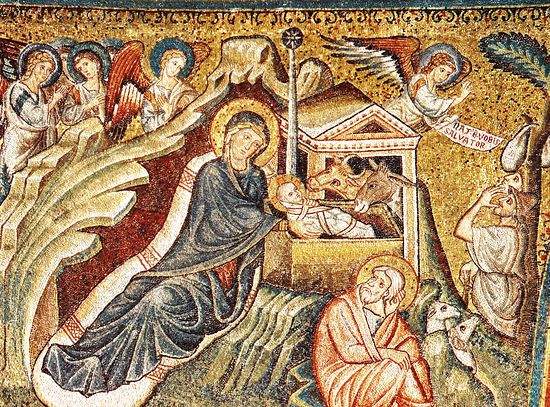
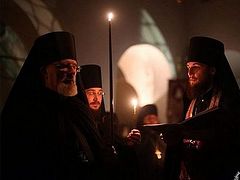
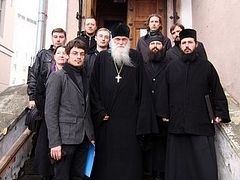
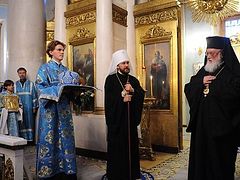
Dear Father Gabriel, please Bless? How wonderful to read your progression to the true Faith.
May I please recommend, to any of those who need clear historical evidence of the identity of this philosophical papal institution? We use in our teaching ministry, the writings of Dr. JS Romanides (whose repose was on this very day!) who brilliantly documents the take-over of the Bishopric in Rome by the Frankish Church founded by Charlemagne (800 ad at Aachen). The brutal Franks with their "filioque" and sword, transformed the Papacy into a "warrior church"
We highly recommend Dr. Romanides work under "contents" at www.romanity.org... Looking forward to the Blessed Nativity of our Lord and Savior in the Flesh, we greet you and your holy prayer for us and our Mission here, Presb'a Irene Matta M.Th Descent of the Holy Spirit Mission, Santa Maria CA
(805) 459-5460 Youtube.com "Judith Irene Matta"
Yes, in America, there are too many choices, and all these churches claim to be the true faith, the true Church, and the only path to God. So I was frustrated and confused for many years, and I realized it was because I was trying to find the true Church the wrong way. We can't let others tell us which one it is because the answer will always be different.
I had to go by history alone. It was the only way. The true Church would necessarily be the FIRST Church and the UNCHANGING Church, and there is only one that fulfills both: The Orthodox Church.
I wish I could meet Fr Gabriel in person. He's an incredible, remarkable man in Christ.
Please pray to the Lord God that our souls be saved. Your 'little books', as you call them, have been a great help in our daily struggle to live the life of the Gospel. I feel that I have met you through these books and that is why I ask for a remembrance in your prayers.
Devotedly in Christ,
Father Roman, unworthy priest
and his angel
I'm sure many other Catholics feel the same way.
I joined the Catholic Church 20 years ago, and since then have noticed how it is becoming more and more Protestant in its way of thinking and it way of celebrating the liturgy, and in many distressing ways, grossly secular, unlike the Church of the Fathers I had assumed it represented.
Needless to say, I am currently visiting some of the Orthodox churches in my city. I hope they don't feel 'invaded', as Fr Bunge has mentioned.
There shall be reconciliation between the Western and Eastern Christian Churches in our lifetype if We Live As Yeshua Lived...